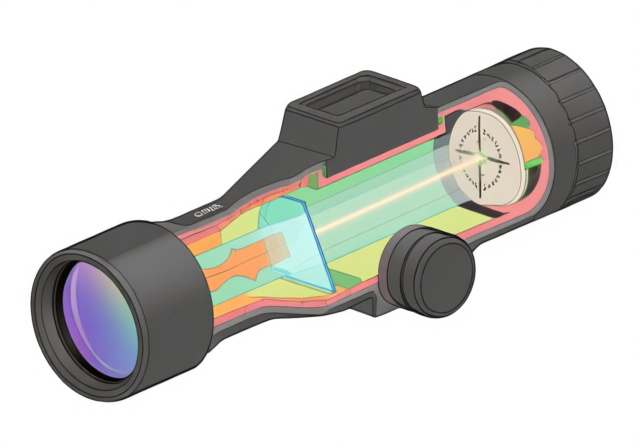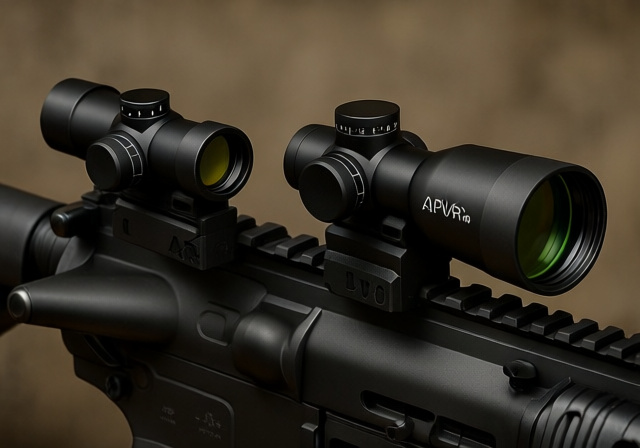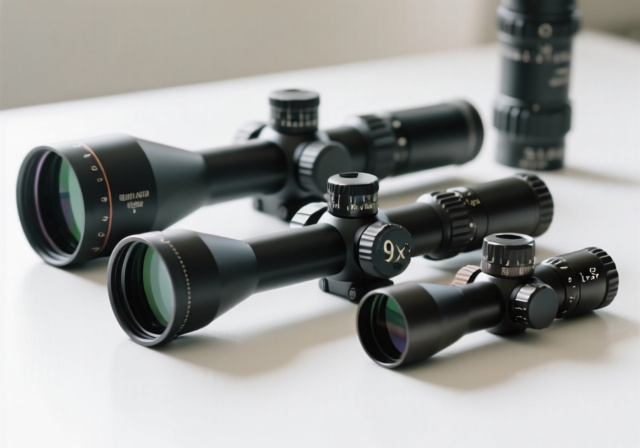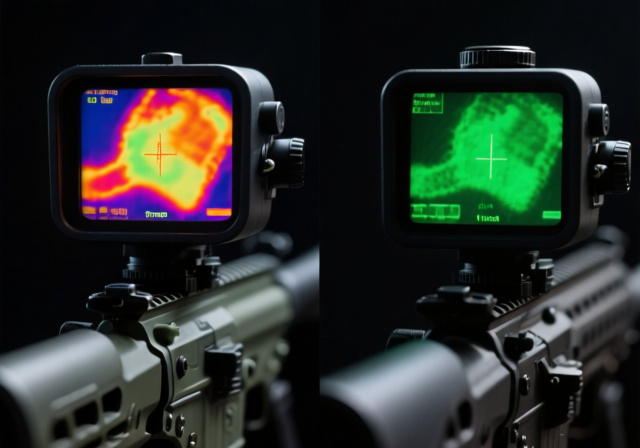

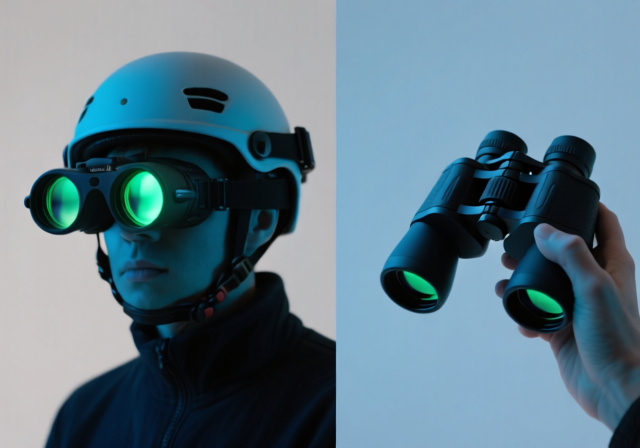

Night vision technology has revolutionized how we operate in darkness, but choosing between goggles and binoculars can be confusing. Based on my experience testing various night vision devices, the choice fundamentally comes down to your primary use case: do you need hands-free mobility for navigation, or magnified precision for observation?
Night vision goggles provide hands-free operation with 1x magnification for natural movement and depth perception, while night vision binoculars offer higher magnification (typically 3x-8x+) for identifying distant targets but require handheld operation. This core difference determines which device excels in specific scenarios.
Having spent considerable time researching and comparing optical devices, I’ve found that understanding this distinction is crucial for making the right investment. The wrong choice can leave you with equipment that doesn’t match your needs, potentially costing you thousands without delivering the performance you require.
In this comprehensive guide, we’ll explore every aspect of both device types, helping you make an informed decision based on real-world applications rather than marketing hype. Whether you’re navigating terrain, observing wildlife, or conducting surveillance, we’ll show you which tool is right for your specific mission.
For those interested in broader optical device comparisons, understanding these fundamental differences will help you navigate the entire night vision ecosystem more effectively.
Night vision technology operates on two main principles: image intensification and digital enhancement. Traditional night vision devices use image intensifier tubes that amplify existing ambient light thousands of times, while digital versions capture infrared light and convert it to visible images using CMOS sensors.
Think of image intensification as having extremely sensitive eyes that can detect and amplify the tiniest light particles – even starlight. The technology collects photons through the objective lens, converts them to electrons, multiplies them through a microchannel plate, and then converts them back to visible light on a phosphor screen.
Digital night vision works more like a specialized camera, using infrared-sensitive sensors to capture images and display them on an LCD screen. While generally less sensitive than high-end tube technology, digital devices offer recording capabilities, color display options, and lower costs.
Image Intensification: Technology that amplifies existing light (moonlight, starlight) to create visible images in near-total darkness. Performance rated by generations (Gen 1-4), with each generation offering significant improvements in clarity, range, and light amplification.
The generation rating system (Gen 1 through Gen 3/4) is crucial when understanding night vision capabilities. Gen 1 devices represent entry-level night vision with noticeable distortion around the edges, while Gen 3+ represents military-grade performance with exceptional clarity and sensitivity. Most civilian users find Gen 2+ to be the sweet spot for performance and value.
Night vision goggles are designed for mobility and situational awareness. These head-mounted devices typically feature dual tubes for binocular vision with 1x magnification, preserving your natural depth perception and field of view. The hands-free design allows you to navigate, operate equipment, or handle weapons while maintaining night vision capability.
Modern goggles weigh between 1-2 pounds and can be mounted directly to helmets or head straps. Premium models like the L3Harris GPNVG-18 offer an impressive 97-degree field of view through four-tube systems, while more accessible options like the PVS-31 provide 40-degree fields with dual-tube configurations.
The real advantage of goggles becomes apparent when you need to move through dark environments. I’ve found that the ability to maintain natural peripheral vision while having both hands available makes goggles indispensable for navigation, search and rescue operations, or any scenario requiring mobility.
However, goggles have limitations. The 1x magnification means distant objects remain difficult to identify clearly, and the close proximity of intensifier tubes to your eyes can cause eye strain during extended use. Battery life typically ranges from 20-40 hours depending on the technology generation and usage conditions.
Night vision binoculars excel at identifying and observing objects at distance. These handheld devices incorporate magnification (typically 3x-8x+) paired with night vision technology, allowing you to see clearly hundreds of yards away in darkness. The dual eyepieces provide comfortable viewing and better depth perception than monocular designs.
Quality binoculars like the ATN PS31-3 or Armasight BNVD offer Gen 3 performance with impressive clarity and range. Digital options such as the AKASO Seemore 200 provide recording capabilities and color imaging at a fraction of the cost, though with reduced performance in extreme darkness.
The magnification advantage is significant. Where goggles might help you navigate to a location, binoculars allow you to identify whether that distant shape is a deer or a person. This makes binoculars the preferred choice for surveillance, wildlife observation, and hunting from fixed positions.
The trade-off comes in mobility. Binoculars require handheld operation, tying up one or both hands and limiting your ability to navigate difficult terrain. The higher magnification also narrows your field of view (typically 5-15 degrees), making it harder to maintain situational awareness of your surroundings.
Battery life generally exceeds 40 hours for analog models and can reach 60+ hours for digital variants. Many digital binoculars offer additional features like video recording, Wi-Fi connectivity, and built-in infrared illuminators for total darkness operation.
| Feature | Night Vision Goggles | Night Vision Binoculars |
|---|---|---|
| Magnification | 1x (natural viewing) | 3x-8x+ (magnified view) |
| Field of View | 40-97 degrees | 5-15 degrees |
| Operation | Hands-free, head-mounted | Handheld operation required |
| Mobility | Excellent for movement | Limited while viewing |
| Depth Perception | Superior (dual-eye, 1x) | Good (dual-eye, magnified) |
| Weight | 1-2 pounds | 2-4 pounds |
| Battery Life | 20-40 hours | 40-60+ hours |
| Best Range | 50-100 yards (recognition) | 300-800+ yards (recognition) |
| Price Range | $2,000-$12,000 | $500-$8,000 |
The fundamental difference comes down to purpose: goggles are designed for moving through darkness, while binoculars are designed for observing within it. This single distinction drives all other differences in design and capability.
Magnification is perhaps the most obvious difference. Goggles maintain 1x magnification to preserve your natural spatial awareness – crucial when navigating uneven terrain or operating vehicles. Binoculars sacrifice situational awareness for identification capability, allowing you to determine not just that something is there, but what it is.
Field of view directly correlates with magnification. Goggles provide wide fields of view that help you maintain awareness of your surroundings. I’ve found that the 40+ degree field of view in most goggles feels natural and allows for normal head movements. Binoculars narrow this to 5-15 degrees, forcing you to scan systematically to avoid missing important details.
Operation style affects everything else you can do. With goggles, your hands remain free for weapons, tools, or maintaining balance. This is why military units prefer goggles for tactical operations. Binoculars demand your attention and at least one hand, making them better suited to stationary observation from positions like deer stands or surveillance posts.
⚠️ Important: Night vision devices cannot see through complete darkness. All traditional night vision requires some ambient light (moonlight, starlight). For total darkness, you’ll need an infrared illuminator or thermal imaging technology.
For military, law enforcement, or security operations requiring movement and threat identification, goggles are clearly superior. The hands-free capability allows weapon operation while maintaining situational awareness. Special operations units like Navy SEALs typically use quad-tube goggles like the GPNVG-18 for the unparalleled 97-degree field of view.
The choice depends entirely on your hunting style. For stand hunting from blinds or treestands where you’re observing distant feeding areas, binoculars with 5-8x magnification help you assess trophy quality at 300+ yards. For still hunting or tracking where you’re actively moving through terrain, goggles provide the mobility advantage and close-range detection needed.
When monitoring fixed locations or conducting perimeter security from observation posts, binoculars excel. The magnification helps identify individuals, license plates, or specific activities at distance. For mobile security patrols requiring navigation and quick response capabilities, goggles provide better overall utility.
Nature photographers and researchers generally prefer binoculars for identifying species and behavior from non-intrusive distances. The ability to observe animals without disturbance is crucial for natural behavior studies. Some researchers use a combination approach – goggles for approaching study areas after dark, then switching to binoculars for detailed observation.
SAR teams often employ both devices depending on mission phase. Goggles excel during initial searches requiring rapid terrain coverage and mobility. Once potential search areas are identified, binoculars help team members scan specific locations from vantage points, looking for heat signatures or movement indicative of lost persons.
Your budget will significantly influence your options. Entry-level digital binoculars start around $300-500, while quality analog binoculars begin at $2,000. Goggles typically start at $3,000 and can exceed $10,000 for military-grade systems. Remember to factor in costs for batteries, carrying cases, and mounting systems when budgeting.
Technology generation matters more than brand. Gen 1 devices (under $1,000) offer basic night vision but struggle in very dark conditions. Gen 2+ devices ($2,000-$5,000) provide excellent performance for most civilian applications. Gen 3+ systems ($5,000+) deliver military-grade clarity but face export restrictions.
Consider your local regulations. While most night vision devices are legal for civilian ownership in the United States, some states restrict certain features or applications. Internationally, regulations vary widely – always research local laws before purchasing, especially for high-end systems.
Think about total cost of ownership beyond the initial purchase. High-end tubes have limited lifespans (typically 1,500-2,000 hours for Gen 3) and replacement costs can exceed $3,000. Digital devices offer longer lifespans but may become obsolete as technology advances.
For those who wear glasses, consider eye relief and comfort factors. Some devices accommodate glasses better than others, and extended wear comfort varies significantly between models. Try before you buy when possible, especially for goggles that will be head-mounted for hours.
Neither is universally better – they serve different purposes. Choose goggles for hands-free navigation and mobile operations. Choose binoculars for identifying distant objects from stationary positions. Many serious users own both devices for different scenarios.
Navy SEALs primarily use high-end goggles like the L3Harris GPNVG-18 (Ground Panoramic Night Vision Goggle) with four tubes providing 97-degree field of view. They also use PVS-31 and AN/PSQ-20 fusion devices combining night vision and thermal imaging for different mission requirements.
Yes, civilians can legally own night vision goggles in most countries, including the United States. However, export of Gen 3+ technology from the US is restricted under ITAR regulations. Some states have specific restrictions on use while hunting, so check local regulations before purchasing or using night vision equipment.
Traditional night vision requires some ambient light (moonlight, starlight, or distant city glow). In complete darkness, you need an infrared illuminator – essentially an invisible flashlight that only night vision devices can detect. Digital night vision often includes built-in IR illuminators, while analog devices may require external units.
Recognition range varies by technology generation and conditions. Gen 1 devices typically recognize humans at 75-100 yards. Gen 2+ extends this to 200-300 yards. Gen 3+ systems can identify targets at 500+ yards under ideal conditions. Detection ranges (seeing that something is there) are typically 2-3 times recognition distances.
Night vision amplifies existing light to create visible images, while thermal imaging detects heat signatures. Night vision shows detail and recognizes faces but needs some light. Thermal works in total darkness and sees through obscurants like smoke but lacks fine detail. Fusion devices combine both technologies for enhanced capability.
After analyzing both device types across multiple applications, the decision ultimately comes down to your primary use case. If you need to navigate, move, or operate equipment in darkness, goggles are the clear choice despite their higher cost. If you primarily observe from fixed positions, binoculars offer better value and magnification capabilities.
For budget-conscious beginners, I recommend starting with quality digital binoculars to learn night vision fundamentals before investing in expensive analog systems. The recording capability of digital devices also helps document and analyze observations.
Professionals who require both capabilities often invest in a versatile monocular system that can be handheld like binoculars or mounted like goggles, providing flexibility across different scenarios. This approach maximizes utility while minimizing total equipment investment.
When making your final decision, consider not just your current needs but potential future applications. The right optical equipment can serve you well for years if chosen carefully. Test devices when possible, read user reviews from people with similar applications, and buy from reputable dealers who provide good warranty support.
Night vision technology continues to evolve, with digital systems rapidly improving and costs gradually decreasing. Whether you choose goggles or binoculars, investing in quality equipment from established manufacturers ensures reliability when it matters most – in those critical moments when darkness would otherwise limit your capabilities.


